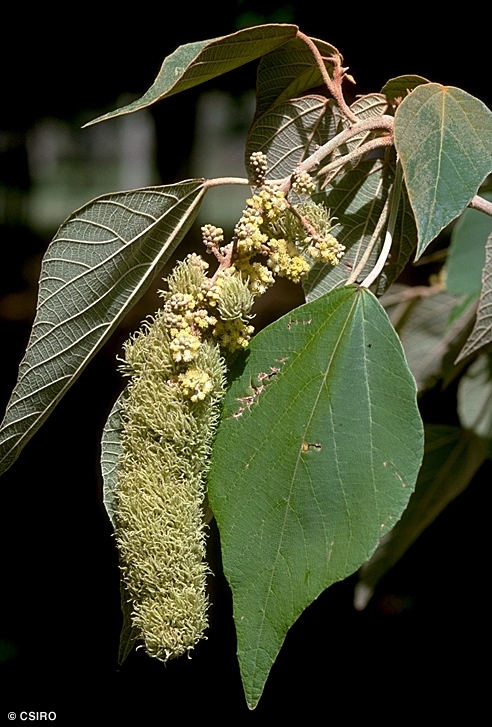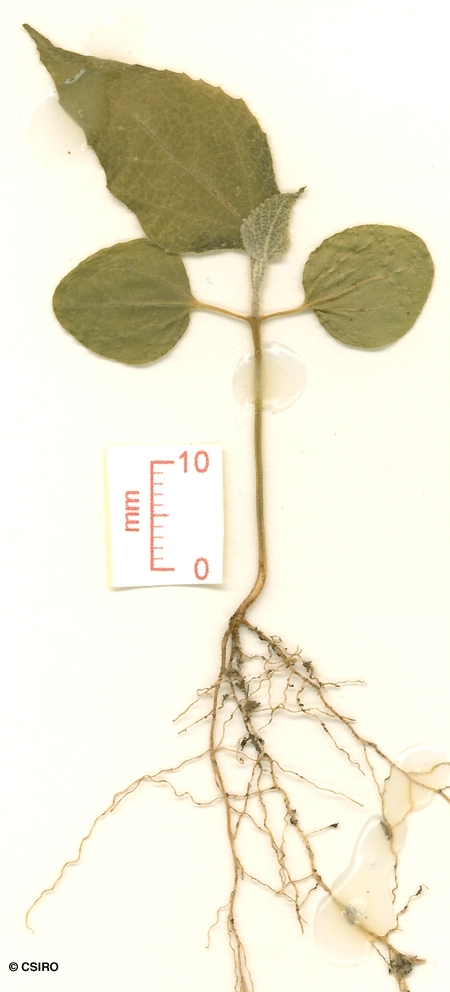Australian Tropical Rainforest Plants - Online edition
Mallotus mollissimus (Geiseler) Airy Shaw







Airy Shaw, H.K. (1972) Kew Bulletin 26: 297.
Kamala, Green; Green Kamala; Woolly Mallotus; Soft Kamala; Kamala
Seldom exceeding 30 cm dbh.
Young shoots and younger leaf bearing twigs densely clothed in short pale brown stellate hairs. Freshly broken twigs producing a small amount of dark coloured exudate, mainly from the pith. Stellate hairs and small yellowish glands visible with a lens on the underside of the leaf blade. Small oil dots visible with a lens. Leaf blades about 13-28 x 9-23 cm.
Cotyledons ovate or broadly ovate, about 12-15 mm long, hairy on the upper surface. At the tenth leaf stage: leaf blade cordate-ovate, apex acuminate, base peltate, cordate or obtuse, both the upper and lower surfaces with white stellate hairs, upper surface with two glands near the junction of the petiole, lower surface with numerous pale yellow glands; petiole and terminal bud densely clothed in pale or white stellate hairs. Seed germination time 45 to 48 days.
Occurs in CYP, NEQ, CEQ and southwards to south eastern Queensland. Altitudinal range from near sea level to 800 m. This species is favoured by disturbance and grows in gaps in well developed rain forest or on the margins of rain forest. It is a typical regrowth species in coastal lowland and upland rain forest. Also occurs in Asia, Malesia and the Pacific islands.





